- Home
- Walter Isaacson
Walter Isaacson Great Innovators e-book boxed set Page 33
Walter Isaacson Great Innovators e-book boxed set Read online
Page 33
Lisa Moves In
In the middle of Lisa’s eighth-grade year, her teachers called Jobs. There were serious problems, and it was probably best for her to move out of her mother’s house. So Jobs went on a walk with Lisa, asked about the situation, and offered to let her move in with him. She was a mature girl, just turning fourteen, and she thought about it for two days. Then she said yes. She already knew which room she wanted: the one right next to her father’s. When she was there once, with no one home, she had tested it out by lying down on the bare floor.
It was a tough period. Chrisann Brennan would sometimes walk over from her own house a few blocks away and yell at them from the yard. When I asked her recently about her behavior and the allegations that led to Lisa’s moving out of her house, she said that she had still not been able to process in her own mind what occurred during that period. But then she wrote me a long email that she said would help explain the situation:
Do you know how Steve was able to get the city of Woodside to allow him to tear his Woodside home down? There was a community of people who wanted to preserve his Woodside house due to its historical value, but Steve wanted to tear it down and build a home with an orchard. Steve let that house fall into so much disrepair and decay over a number of years that there was no way to save it. The strategy he used to get what he wanted was to simply follow the line of least involvement and resistance. So by his doing nothing on the house, and maybe even leaving the windows open for years, the house fell apart. Brilliant, no? . . . In a similar way did Steve work to undermine my effectiveness AND my well being at the time when Lisa was 13 and 14 to get her to move into his house. He started with one strategy but then it moved to another easier one that was even more destructive to me and more problematic for Lisa. It may not have been of the greatest integrity, but he got what he wanted.
Lisa lived with Jobs and Powell for all four of her years at Palo Alto High School, and she began using the name Lisa Brennan-Jobs. He tried to be a good father, but there were times when he was cold and distant. When Lisa felt she had to escape, she would seek refuge with a friendly family who lived nearby. Powell tried to be supportive, and she was the one who attended most of Lisa’s school events.
By the time Lisa was a senior, she seemed to be flourishing. She joined the school newspaper, The Campanile, and became the coeditor. Together with her classmate Ben Hewlett, grandson of the man who gave her father his first job, she exposed secret raises that the school board had given to administrators. When it came time to go to college, she knew she wanted to go east. She applied to Harvard—forging her father’s signature on the application because he was out of town—and was accepted for the class entering in 1996.
At Harvard Lisa worked on the college newspaper, The Crimson, and then the literary magazine, The Advocate. After breaking up with her boyfriend, she took a year abroad at King’s College, London. Her relationship with her father remained tumultuous throughout her college years. When she would come home, fights over small things—what was being served for dinner, whether she was paying enough attention to her half-siblings—would blow up, and they would not speak to each other for weeks and sometimes months. The arguments occasionally got so bad that Jobs would stop supporting her, and she would borrow money from Andy Hertzfeld or others. Hertzfeld at one point lent Lisa $20,000 when she thought that her father was not going to pay her tuition. “He was mad at me for making the loan,” Hertzfeld recalled, “but he called early the next morning and had his accountant wire me the money.” Jobs did not go to Lisa’s Harvard graduation in 2000. He said, “She didn’t even invite me.”
There were, however, some nice times during those years, including one summer when Lisa came back home and performed at a benefit concert for the Electronic Frontier Foundation, an advocacy group that supports access to technology. The concert took place at the Fillmore Auditorium in San Francisco, which had been made famous by the Grateful Dead, Jefferson Airplane, and Jimi Hendrix. She sang Tracy Chapman’s anthem “Talkin’ bout a Revolution” (“Poor people are gonna rise up / And get their share”) as her father stood in the back cradling his one-year-old daughter, Erin.
Jobs’s ups and downs with Lisa continued after she moved to Manhattan as a freelance writer. Their problems were exacerbated because of Jobs’s frustrations with Chrisann. He had bought a $700,000 house for Chrisann to use and put it in Lisa’s name, but Chrisann convinced her to sign it over and then sold it, using the money to travel with a spiritual advisor and to live in Paris. Once the money ran out, she returned to San Francisco and became an artist creating “light paintings” and Buddhist mandalas. “I am a ‘Connector’ and a visionary contributor to the future of evolving humanity and the ascended Earth,” she said on her website (which Hertzfeld maintained for her). “I experience the forms, color, and sound frequencies of sacred vibration as I create and live with the paintings.” When Chrisann needed money for a bad sinus infection and dental problem, Jobs refused to give it to her, causing Lisa again to not speak to him for a few years. And thus the pattern would continue.
Mona Simpson used all of this, plus her imagination, as a springboard for her third novel, A Regular Guy, published in 1996. The book’s title character is based on Jobs, and to some extent it adheres to reality: It depicts Jobs’s quiet generosity to, and purchase of a special car for, a brilliant friend who had degenerative bone disease, and it accurately describes many unflattering aspects of his relationship with Lisa, including his original denial of paternity. But other parts are purely fiction; Chrisann had taught Lisa at a very early age how to drive, for example, but the book’s scene of “Jane” driving a truck across the mountains alone at age five to find her father of course never happened. In addition, there are little details in the novel that, in journalist parlance, are too good to check, such as the head-snapping description of the character based on Jobs in the very first sentence: “He was a man too busy to flush toilets.”
On the surface, the novel’s fictional portrayal of Jobs seems harsh. Simpson describes her main character as unable “to see any need to pander to the wishes or whims of other people.” His hygiene is also as dubious as that of the real Jobs. “He didn’t believe in deodorant and often professed that with a proper diet and the peppermint castile soap, you would neither perspire nor smell.” But the novel is lyrical and intricate on many levels, and by the end there is a fuller picture of a man who loses control of the great company he had founded and learns to appreciate the daughter he had abandoned. The final scene is of him dancing with his daughter.
Jobs later said that he never read the novel. “I heard it was about me,” he told me, “and if it was about me, I would have gotten really pissed off, and I didn’t want to get pissed at my sister, so I didn’t read it.” However, he told the New York Times a few months after the book appeared that he had read it and saw the reflections of himself in the main character. “About 25% of it is totally me, right down to the mannerisms,” he told the reporter, Steve Lohr. “And I’m certainly not telling you which 25%.” His wife said that, in fact, Jobs glanced at the book and asked her to read it for him to see what he should make of it.
Simpson sent the manuscript to Lisa before it was published, but at first she didn’t read more than the opening. “In the first few pages, I was confronted with my family, my anecdotes, my things, my thoughts, myself in the character Jane,” she noted. “And sandwiched between the truths was invention—lies to me, made more evident because of their dangerous proximity to the truth.” Lisa was wounded, and she wrote a piece for the Harvard Advocate explaining why. Her first draft was very bitter, then she toned it down a bit before she published it. She felt violated by Simpson’s friendship. “I didn’t know, for those six years, that Mona was collecting,” she wrote. “I didn’t know that as I sought her consolations and took her advice, she, too, was taking.” Eventually Lisa reconciled with Simpson. They went out to a coffee shop to discuss the book, and Lisa told her that she hadn’t been abl
e to finish it. Simpson told her she would like the ending. Over the years Lisa had an on-and-off relationship with Simpson, but it would be closer in some ways than the one she had with her father.
Children
When Powell gave birth in 1991, a few months after her wedding to Jobs, their child was known for two weeks as “baby boy Jobs,” because settling on a name was proving only slightly less difficult than choosing a washing machine. Finally, they named him Reed Paul Jobs. His middle name was that of Jobs’s father, and his first name (both Jobs and Powell insist) was chosen because it sounded good rather than because it was the name of Jobs’s college.
Reed turned out to be like his father in many ways: incisive and smart, with intense eyes and a mesmerizing charm. But unlike his father, he had sweet manners and a self-effacing grace. He was creative—as a kid he liked to dress in costume and stay in character—and also a great student, interested in science. He could replicate his father’s stare, but he was demonstrably affectionate and seemed not to have an ounce of cruelty in his nature.
Erin Siena Jobs was born in 1995. She was a little quieter and sometimes suffered from not getting much of her father’s attention. She picked up her father’s interest in design and architecture, but she also learned to keep a bit of an emotional distance, so as not to be hurt by his detachment.
The youngest child, Eve, was born in 1998, and she turned into a strong-willed, funny firecracker who, neither needy nor intimidated, knew how to handle her father, negotiate with him (and sometimes win), and even make fun of him. Her father joked that she’s the one who will run Apple someday, if she doesn’t become president of the United States.
Jobs developed a strong relationship with Reed, but with his daughters he was more distant. As he would with others, he would occasionally focus on them, but just as often would completely ignore them when he had other things on his mind. “He focuses on his work, and at times he has not been there for the girls,” Powell said. At one point Jobs marveled to his wife at how well their kids were turning out, “especially since we’re not always there for them.” This amused, and slightly annoyed, Powell, because she had given up her career when Reed turned two and she decided she wanted to have more children.
In 1995 Oracle’s CEO Larry Ellison threw a fortieth-birthday party for Jobs filled with tech stars and moguls. Ellison had become a close friend, and he would often take the Jobs family out on one of his many luxurious yachts. Reed started referring to him as “our rich friend,” which was amusing evidence of how his father refrained from ostentatious displays of wealth. The lesson Jobs learned from his Buddhist days was that material possessions often cluttered life rather than enriched it. “Every other CEO I know has a security detail,” he said. “They’ve even got them at their homes. It’s a nutso way to live. We just decided that’s not how we wanted to raise our kids.”
CHAPTER TWENTY-TWO
TOY STORY
Buzz and Woody to the Rescue
Jeffrey Katzenberg
“It’s kind of fun to do the impossible,” Walt Disney once said. That was the type of attitude that appealed to Jobs. He admired Disney’s obsession with detail and design, and he felt that there was a natural fit between Pixar and the movie studio that Disney had founded.
The Walt Disney Company had licensed Pixar’s Computer Animation Production System, and that made it the largest customer for Pixar’s computers. One day Jeffrey Katzenberg, the head of Disney’s film division, invited Jobs down to the Burbank studios to see the technology in operation. As the Disney folks were showing him around, Jobs turned to Katzenberg and asked, “Is Disney happy with Pixar?” With great exuberance, Katzenberg answered yes. Then Jobs asked, “Do you think we at Pixar are happy with Disney?” Katzenberg said he assumed so. “No, we’re not,” Jobs said. “We want to do a film with you. That would make us happy.”
Katzenberg was willing. He admired John Lasseter’s animated shorts and had tried unsuccessfully to lure him back to Disney. So Katzenberg invited the Pixar team down to discuss partnering on a film. When Catmull, Jobs, and Lasseter got settled at the conference table, Katzenberg was forthright. “John, since you won’t come work for me,” he said, looking at Lasseter, “I’m going to make it work this way.”
Just as the Disney company shared some traits with Pixar, so Katzenberg shared some with Jobs. Both were charming when they wanted to be, and aggressive (or worse) when it suited their moods or interests. Alvy Ray Smith, on the verge of quitting Pixar, was at the meeting. “Katzenberg and Jobs impressed me as a lot alike,” he recalled. “Tyrants with an amazing gift of gab.” Katzenberg was delightfully aware of this. “Everybody thinks I’m a tyrant,” he told the Pixar team. “I am a tyrant. But I’m usually right.” One can imagine Jobs saying the same.
As befitted two men of equal passion, the negotiations between Katzenberg and Jobs took months. Katzenberg insisted that Disney be given the rights to Pixar’s proprietary technology for making 3-D animation. Jobs refused, and he ended up winning that engagement. Jobs had his own demand: Pixar would have part ownership of the film and its characters, sharing control of both video rights and sequels. “If that’s what you want,” Katzenberg said, “we can just quit talking and you can leave now.” Jobs stayed, conceding that point.
Lasseter was riveted as he watched the two wiry and tightly wound principals parry and thrust. “Just to see Steve and Jeffrey go at it, I was in awe,” he recalled. “It was like a fencing match. They were both masters.” But Katzenberg went into the match with a saber, Jobs with a mere foil. Pixar was on the verge of bankruptcy and needed a deal with Disney far more than Disney needed a deal with Pixar. Plus, Disney could afford to finance the whole enterprise, and Pixar couldn’t. The result was a deal, struck in May 1991, by which Disney would own the picture and its characters outright, have creative control, and pay Pixar about 12.5% of the ticket revenues. It had the option (but not the obligation) to do Pixar’s next two films and the right to make (with or without Pixar) sequels using the characters in the film. Disney could also kill the film at any time with only a small penalty.
The idea that John Lasseter pitched was called “Toy Story.” It sprang from a belief, which he and Jobs shared, that products have an essence to them, a purpose for which they were made. If the object were to have feelings, these would be based on its desire to fulfill its essence. The purpose of a glass, for example, is to hold water; if it had feelings, it would be happy when full and sad when empty. The essence of a computer screen is to interface with a human. The essence of a unicycle is to be ridden in a circus. As for toys, their purpose is to be played with by kids, and thus their existential fear is of being discarded or upstaged by newer toys. So a buddy movie pairing an old favorite toy with a shiny new one would have an essential drama to it, especially when the action revolved around the toys’ being separated from their kid. The original treatment began, “Everyone has had the traumatic childhood experience of losing a toy. Our story takes the toy’s point of view as he loses and tries to regain the single thing most important to him: to be played with by children. This is the reason for the existence of all toys. It is the emotional foundation of their existence.”
The two main characters went through many iterations before they ended up as Buzz Lightyear and Woody. Every couple of weeks, Lasseter and his team would put together their latest set of storyboards or footage to show the folks at Disney. In early screen tests, Pixar showed off its amazing technology by, for example, producing a scene of Woody rustling around on top of a dresser while the light rippling in through a Venetian blind cast shadows on his plaid shirt—an effect that would have been almost impossible to render by hand. Impressing Disney with the plot, however, was more difficult. At each presentation by Pixar, Katzenberg would tear much of it up, barking out his detailed comments and notes. And a cadre of clipboard-carrying flunkies was on hand to make sure every suggestion and whim uttered by Katzenberg received follow-up treatment.
Katzenber
g’s big push was to add more edginess to the two main characters. It may be an animated movie called Toy Story, he said, but it should not be aimed only at children. “At first there was no drama, no real story, and no conflict,” Katzenberg recalled. He suggested that Lasseter watch some classic buddy movies, such as The Defiant Ones and 48 Hours, in which two characters with different attitudes are thrown together and have to bond. In addition, he kept pushing for what he called “edge,” and that meant making Woody’s character more jealous, mean, and belligerent toward Buzz, the new interloper in the toy box. “It’s a toy-eat-toy world,” Woody says at one point, after pushing Buzz out of a window.
After many rounds of notes from Katzenberg and other Disney execs, Woody had been stripped of almost all charm. In one scene he throws the other toys off the bed and orders Slinky to come help. When Slinky hesitates, Woody barks, “Who said your job was to think, spring-wiener?” Slinky then asks a question that the Pixar team members would soon be asking themselves: “Why is the cowboy so scary?” As Tom Hanks, who had signed up to be Woody’s voice, exclaimed at one point, “This guy’s a real jerk!”
Cut!
Lasseter and his Pixar team had the first half of the movie ready to screen by November 1993, so they brought it down to Burbank to show to Katzenberg and other Disney executives. Peter Schneider, the head of feature animation, had never been enamored of Katzenberg’s idea of having outsiders make animation for Disney, and he declared it a mess and ordered that production be stopped. Katzenberg agreed. “Why is this so terrible?” he asked a colleague, Tom Schumacher. “Because it’s not their movie anymore,” Schumacher bluntly replied. He later explained, “They were following Katzenberg’s notes, and the project had been driven completely off-track.”

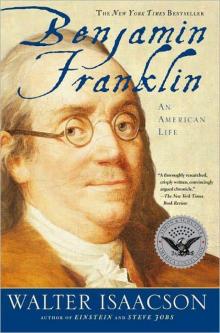 Benjamin Franklin: An American Life
Benjamin Franklin: An American Life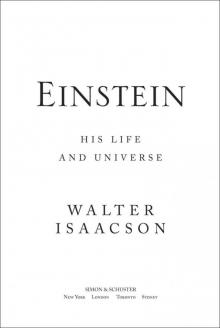 Einstein: His Life and Universe
Einstein: His Life and Universe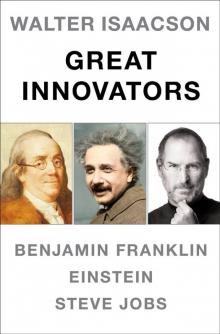 Walter Isaacson Great Innovators e-book boxed set
Walter Isaacson Great Innovators e-book boxed set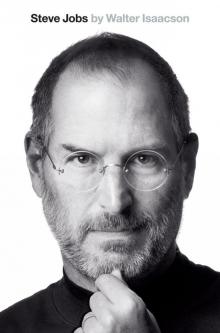 Steve Jobs
Steve Jobs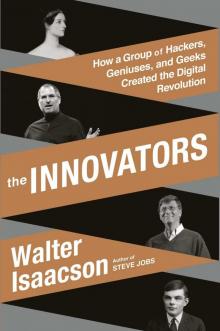 The Innovators
The Innovators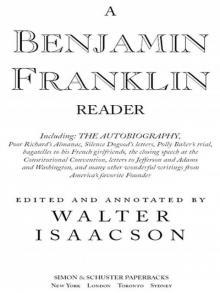 A Benjamin Franklin Reader
A Benjamin Franklin Reader